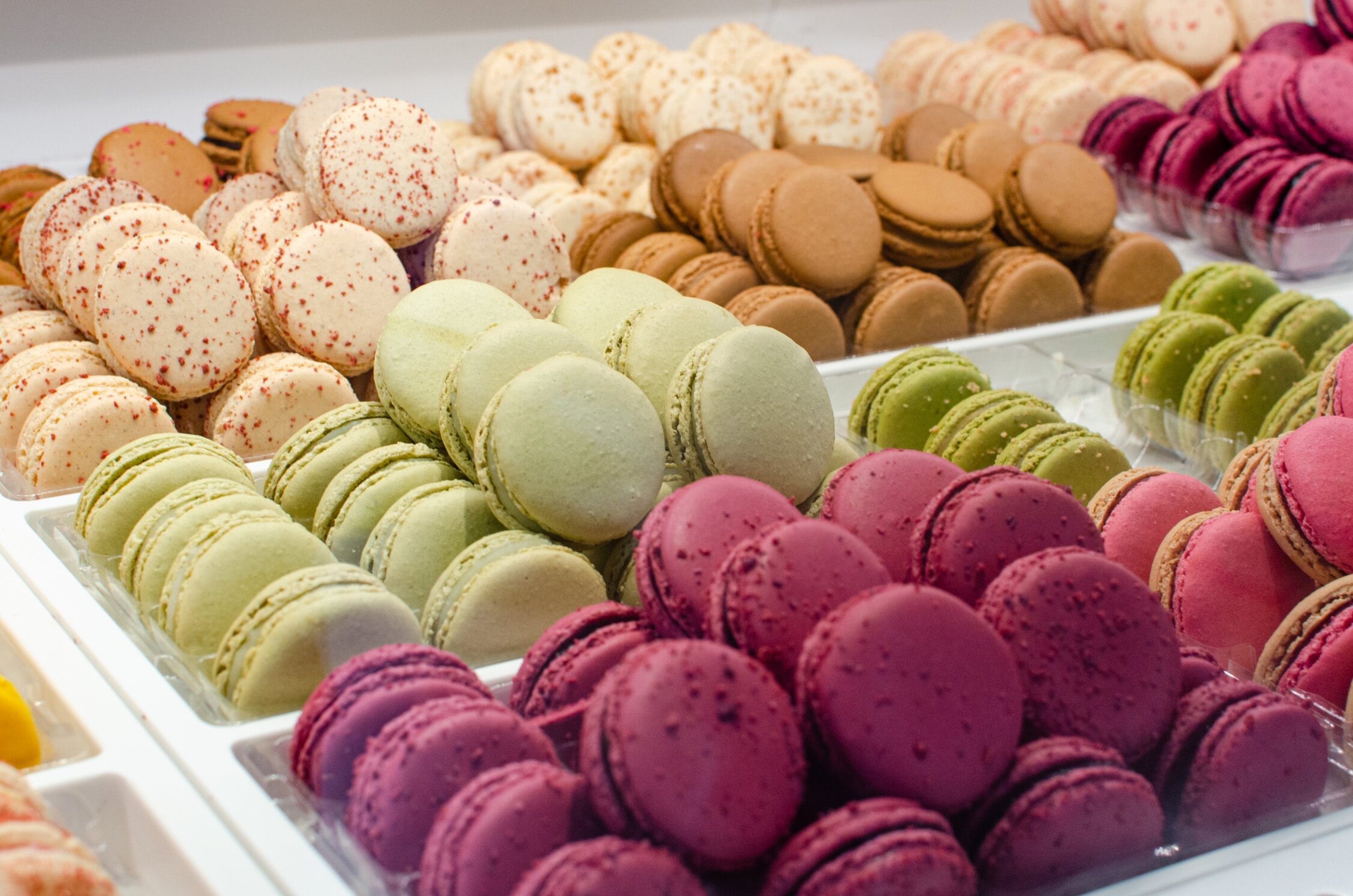Most people are surprised to find out that macaroons and macarons are actually two completely different baked items, not just an alternative spelling or translation issue. The two cookies look and taste different, despite sharing a similar past, name and ingredients.
Both recipes begin with egg whites and sugar begins whipped into a stiff meringue and combined with ground almond or shredded coconut.
MACAROONS (pronounced mah-kah-ROON) are small, lump/ball-style cookies typically made from almond flour, shredded coconut, and sugar. They can be flavored, colored, or even topped with jams or chocolates, sometimes combinations of all three.
These are what grandparents make—at least what mine would make. The ingredients are combined, the mixture is shaped into lumps/balls and they are baked to a toasted golden. When finished they should be soft and chewy o the inside and crisp and golden on the outside.
These sweet treats are popular during Passover, but are just as delicious year round!
Macaroons are WAY easier to make than the colorful “cookie sandwiches” people confuse them with.
Fun Fact: May 30 is National Macaroon Day.
Check out my Classic Coconut Macaroons and Chocolate-Covered Coconut Macaroons. Both are gluten-free!
MACARONS (pronounced mah-kh-ROHN) are the elegant, artisanal meringue cookie sandwiches most people think of when they picture themselves walking along the Seine in Paris!
Macarons are often synonymous with France, but did you know if fact these treats originated in Italy? Traditional unleavened almond paste cookies were at some point made with shredded coconut and ground almond flour. This recipe was further developed in the French courts by chefs brought from Italy.
These delicate treats are having a moment and can be found popping up in little boutiques and a parties everywhere.
Nowadays macarons come in almost every flavor. I have seen everything from Nutella, whiskey and matcha to PB&J and licorice. My favorite flavors include rose, raspberry, pistachio, lemon, and apricot!
Mastering the art of the macaron requires time, patience, and finesse. In fact there is even a special word for folding the dry ingredients in with the egg whites known as “macaronage” because it’s truly a craft.
Once you’ve mastered macaronage, you just have to achieve the perfect texture and shape. Each meringue cookie should looked like a shiny dome with a ruffled bottom edge known as a “foot.” Then make the perfect filling and assemble. Easy-peasy, right?
I can’t wait to practice making these on my own, but it will definitely take a few batches to figure out the technique.
Macarons are perfect for enjoying anytime of day. I’m partial to a macaron with a cup of tea in the afternoon! But I love to give or receive these tasty babies as a gift.
So which do you prefer?
Are you addicted to the chewy coconut macaroons or do you enjoy the crunch of the meringue dome macarons? Either way, both are delicious!












